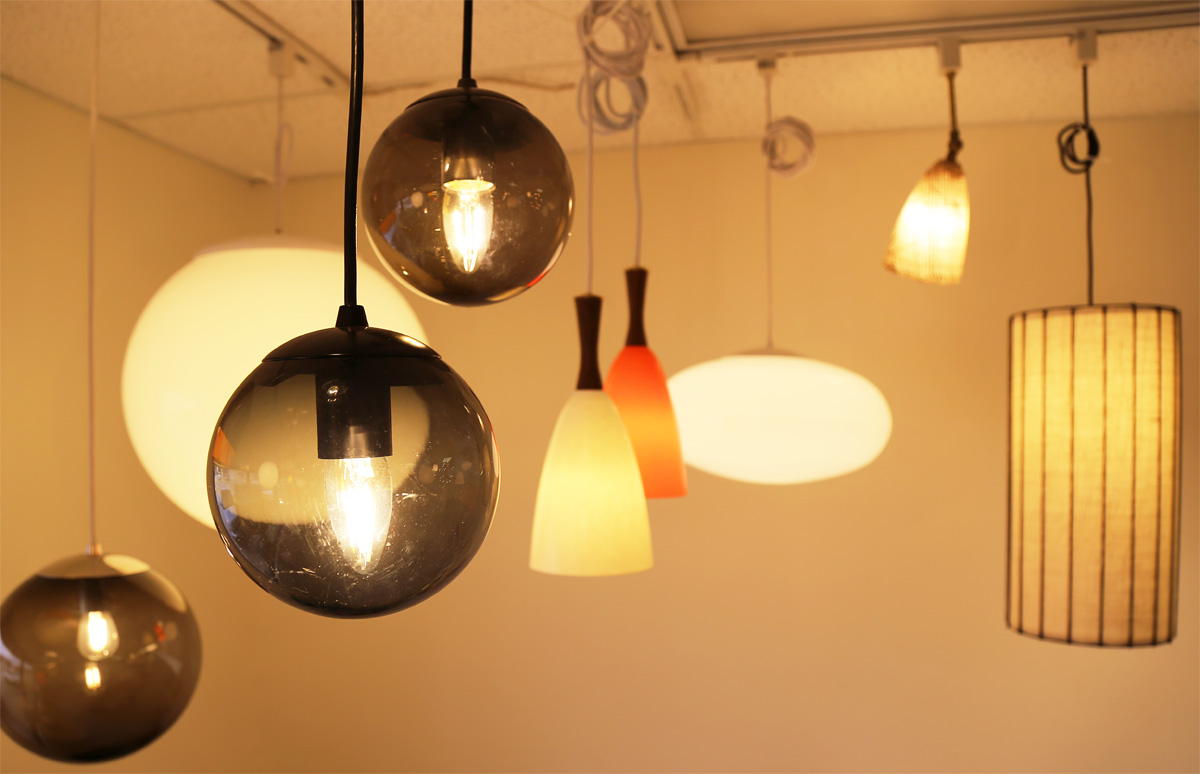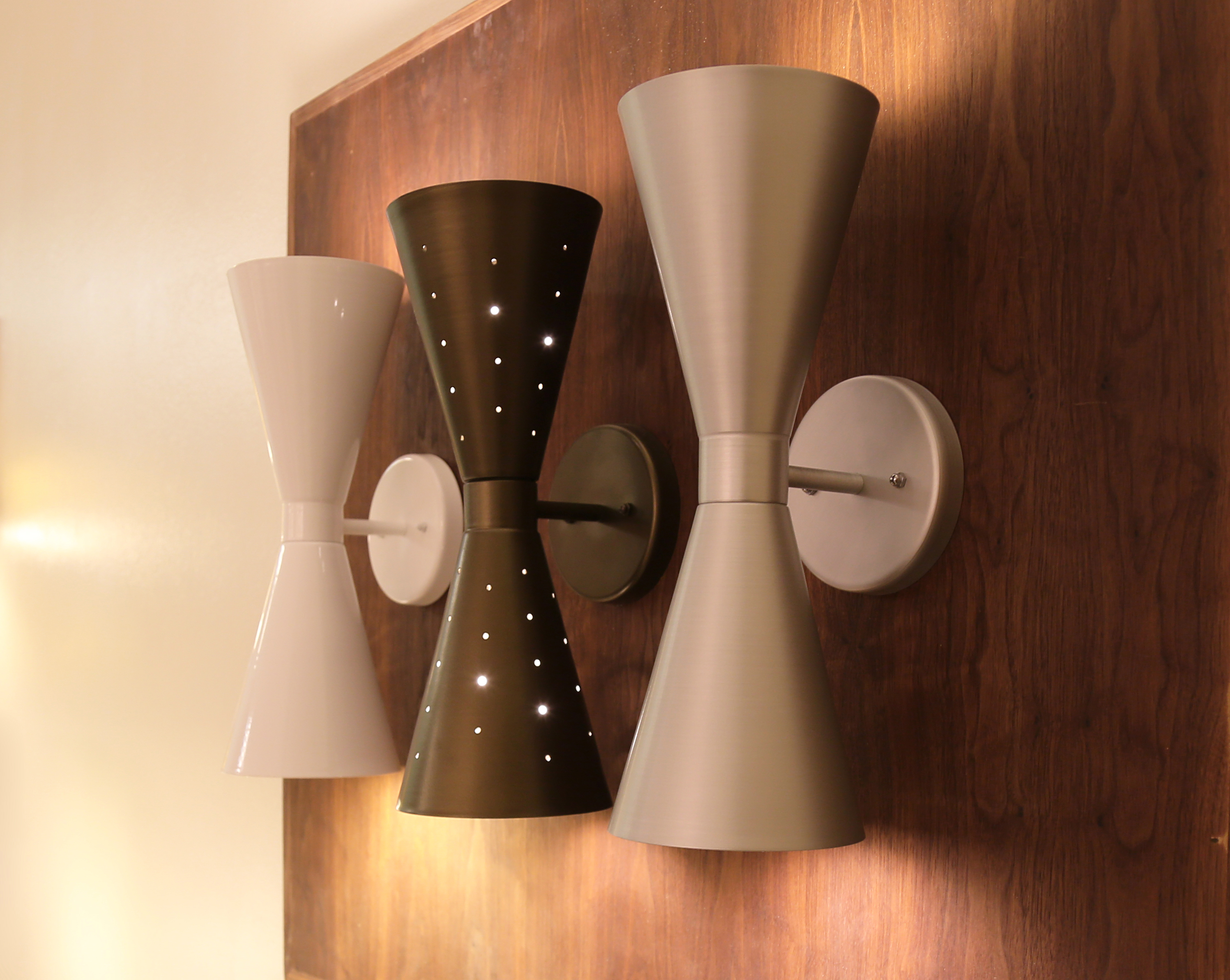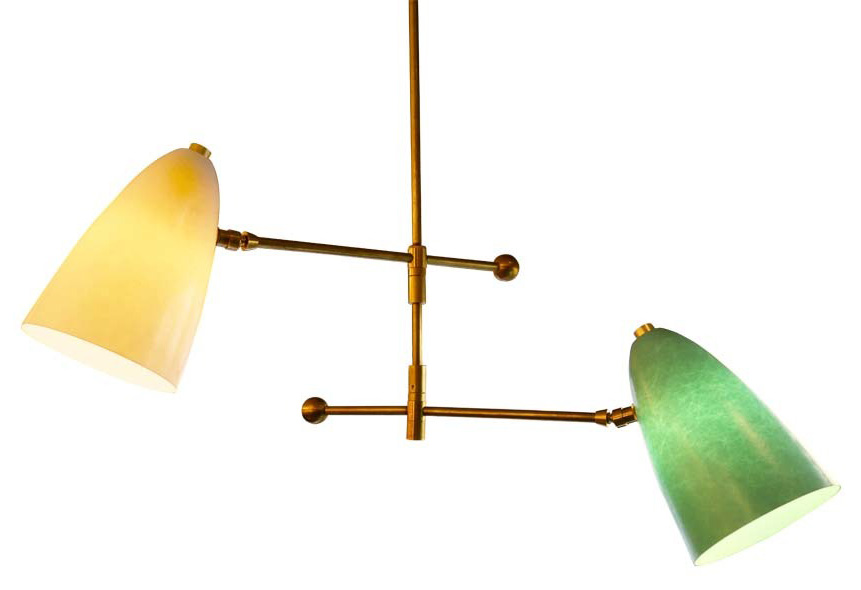Shopping the Light Fantastic
 |
|
one of several major considerations when shopping for new lighting fixtures and lamps. Other key factors include angle of the light, intensity, and color. "You have to educate yourself on the terms," says Hip Haven’s Kelley Sandidge. Above: Selections from Hip Haven’s recently expanded pendant line. All photos courtesy Hip Haven |
 |
|
|
 |
|
|
 |
|
|
|
|
|
|
"Let the sun shine in" chimed the '60s musical Hair—and Eichler homes, with their preponderance of glass, certainly heed the call. Alas, even in California the sun goes down eventually, and sometimes—horror of horrors—never shines at all, for days on end!
In these dark times, we rely on the combined genius of Edison, Faraday, and their colleagues who showed us the light electrically. More than mere electromagnetic radiation, however, light can be a design element of your home—especially if its fixtures are mid-century modern (MCM) in style.
"To me, those types of homes suggest certain lighting strategies," says Kelley Sandidge, owner/designer of Hip Haven, an Internet retailer headquartered in Austin, Texas. "Light is important with mid-century modern because light is part of the whole inside-outside thing."
Modernist light fixtures are the specialty of Hip Haven, but Sandidge concedes that there is room in Eichlers and similar homes for other styles as well.
"The types of lighting I carry are all geared to that style [MCM]," she acknowledges. "I've seen people use fixtures that are traditional or antique in style in a mid-century modern, but I think these styles of fixtures look out of place there. However, contemporary lighting in a modern style can work well."
"I think lighting can be a strong visual statement or it can blend in," Sandidge observes. "It depends on where this lighting is."
Actually, location is one of several major considerations when shopping for new lighting fixtures and lamps. Other key factors include angle of the light, intensity, and color.
"You have to educate yourself on the terms," Sandidge advises lighting shoppers. "Bulbs are changing on us every day, so I'm having to relearn all the time."
Three of these key terms are lumen, kelvin, and watts. Lumens is a standard for measuring light intensity. Kelvin is a scale that measures the color temperature of the light source, from the yellowish hue of incandescent bulbs to the cooler tones of contemporary gas-discharge bulbs and tubes. Watts are a measurement of power consumption.
Sandidge says typical lighting mistakes she sees are bulbs that are "too bright or too blue," as well as light that is "not easy on the eyes" because it angles into people's faces or is so low it necessitates squinting. Furthermore, she notes, "For fixtures that have built-in LED light sources, as opposed to bulbs, it's important to see the fixture in operation to determine of the brightness and color will suit your needs."
The designer encourages homeowners to "make sure it works with the overall view of the area" when selecting new fixtures. She notes that open floor plans and the transparency of glass walls give lighting a much wider effect in modern homes than other housing styles.




